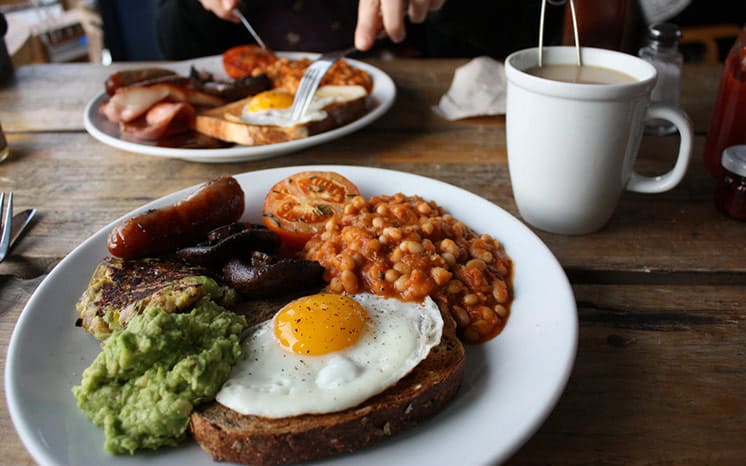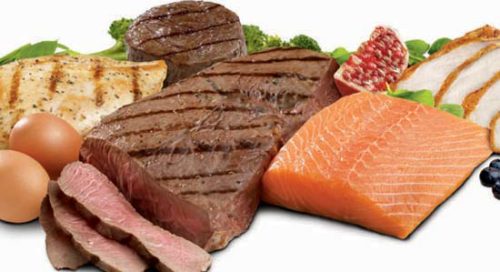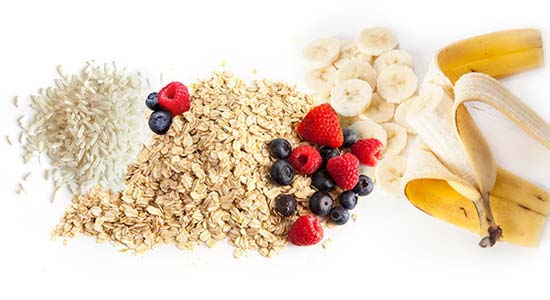
When I first started my fitness journey I focused on eating everything in sight. This put me in a huge calorie surplus and I gained weight, the problem with this approach however was that I put on a lot of unnecessary fat.
Over the years I’ve learned that a much better approach is to eat at a slight calorie surplus made up of the correct macros (protein, carbs and fats), as this will lead to better lean muscle gains. And when it comes to setting up my macros here’s what I learned:
What is the best macro ratio for building lean muscle? When lean-bulking to put on muscle with minimal body fat storage I recommend eating the following ratios:
- PROTEIN: 0.8-1 gram per pound of body weight
- Fat: 20-30% of total calories
- CARBS: the remaining calories left
If you stick to these ratios while being in a slight calorie surplus, preferably only on training days, and having a good training program set up, then you’ll put on a lot of lean muscle without unnecessary fat gain. In this post we’ll look closer on each macro and discuss why it’s important to eat them in the ratios just mentioned.
Table of Contents
Why Eating The Correct Macros Is Important
To build muscle while staying lean and in shape, just counting calories isn’t enough.
We also need to make sure our calories comes from the right sources. For example 100 calories from a cup of fat free Greek yogurt and 100 calories from a pack of candy will affect our bodies very differently.
And this is the reason why we need to break down our daily calorie intake into macronutrients.
Setting Your Bulking Macros
During a bulk, a high intake of protein and carbs will support muscle growth and recovery while also providing the necessary energy to push yourself in the gym. Getting your macros mostly from whole foods will also help with satiety – preventing overeating and fat gain.
Protein

Since protein is essential for muscle growth it’s the most important macronutrient and why we set it first. Before even worrying about how much fat and carbs to eat you need to first determine your protein needs.
Most research indicated that the amount of protein needed to support maximum muscle growth is 0.8 grams per pound (or 1.8 grams per kg) of bodyweight.
When to go higher in protein
If you have a big appetite and struggle staying lean when bulking to gain muscle, then a higher protein intake than 0.8 grams per pound is beneficial. Protein is the most satiating macronutrient of them all.
So, if you’re struggling with fat spill over during your bulk(s) then I recommend that you eat 1 gram per pound (2 grams per kg) of bodyweight instead. As long as you include high protein foods in your meals it will be relatively easy to reach this amount. If you have trouble eating this much protein then it’s fine to include protein shakes into your diet.
So, a 165 lbs male would eat around 132-165 grams of protein per day, with a higher intake if appetite is a problem. The reason why we rather stay at 0.8 grams per pound of protein is to be able to include more carbs to boost training performance (more about that in a moment).
Fat

Going too low in fat will leave you hungry between meals and will make your meals more fun and tasty to eat. Furthermore, a low fat diet might negatively impact testosterone levels.
For these reasons I recommend that you sue 25% of total calories as the default for fat intake. If you prefer to include more fat in exchange for carbs you can adjust this number to 30%. If on the other hand you prefer less fat and more carbs you can adjust this number down to 20%.
A fat intake between 20-30% of total calories will leave the largest percentage of your calories to come from carbohydrates.
How to calculate your fat intake:
- Multiply your daily caloric intake by 0.25 (25%) and then divide that number with 9 to get grams of fat per day.
So for example, if you eat 3000 calories per day, here’s your math:
3000 x 0.25 = 750 calories from fat
750 / 9 = 83 grams of fat per day
Carbs

Leaving enough space for carbs in your diet is an ideal scenario for building muscle. A high intake of carbohydrates will make sure that you maintain full glycogen stores in your muscles. This is beneficial since your body is more efficient at maintaining an anabolic state to build muscle when your glycogen stores are topped off.
In addition, carbs are also the most efficient energy source for anaerobic training performance (strength training). So, a sufficient intake of carbs will ensure optimal training performance. And the better and more intense your workouts are the more muscle you will grow.
How to calculate your carbs intake:
- Add together fat calories and protein calories. Subtract this number from total calories per day. This will provide you with the number of calories to consume from carbs per day. Then divide this number by 4 to get carbs per day in grams.
So, to continue on with the same example, here’s the math:
Fat calories: 750
Protein calories: 132 grams x 4 = 528
750 + 528 = 1278 calories
3000 – 1278 = 1722 calories from carbs
1722 / 4 = 430 g per day
Complete macro ratios for this example will be:
- Protein: 132 grams
- Fat: 83 grams
- Carbs: 430 grams
This is a perfect macro ratio for optimal muscle growth.
Related Questions
How do you lean bulk successfully?
There’s a lot that goes into setting up a successful lean bulk. But, in short here’s what’s most important:
- Start out lean – Starting out at around 8-12 % body fat will lead to better muscle growth, less fat storage and better health. Staying lean is also more enjoyable for most people, and adherence when bulking is very important in order to stay patient. Read this post to learn more about the benefits of starting out lean.
- Focus on progressive overload – The main factor behind muscle growth is training. You can’t force feed gains, muscle only grows because it needs to. So, focusing on getting stronger in the gym overtime should be your priority! Read this post to learn about progressive overload.
- Eat at a slight calories surplus – For beginner to intermediate trainees the highest calories you can get away with to maximize muscle growth, without adding too much fat to your frame is around 250-300 calories above maintenance per day. Preferably these extra calories should be put on training days as well. Read this post to learn about setting up your calories surplus, and this post to find out why it’s important to eat most of your extra calories on training days.
- Set up your macros correctly – Set up your macros accordingly to what you’ve learned in this post.
- Eat most of your food around your workouts – Eating most of your calories around your workouts, both before and after will lead to slightly better muscle growth in the long-term.
- Focus on recovery – Sleep well, stress less and so on!
If you want to learn more about setting up a successful diet whether it’s for bulking or cutting, make sure you read The Complete Dieting Guide For Improving Body Composition.
Can you gain muscle without gaining fat?
Yes, it’s possible to gain muscle without gaining fat. The best way to achieve this would be to use a Recomp protocol. This is where you’re eating at a slight calorie surplus on training days and a slight calorie deficit on rest days.
Assuming you train 3 times per week, I recommend eating 400 calories above maintenance on training days and 300 calories below maintenance on rest days. Going with higher swings than this will likely lead to negative effects on muscle growth and fat loss.
I’ve written more about this topic in this post.

Hi Niklas,
What are the Macros in gms to build lean Muacle and lose body fat?
You would need to calculate your gms depending on your caloric intake. I gave some examples in the article of how! 🙂
Hi Hi.
Thanks for the info. Great job. Just one question though: you suggest to START at 8-12%? Thats a bit rough. I think most beginners/intermediates are not even close to that levels. Any suggestions on how to attain that?